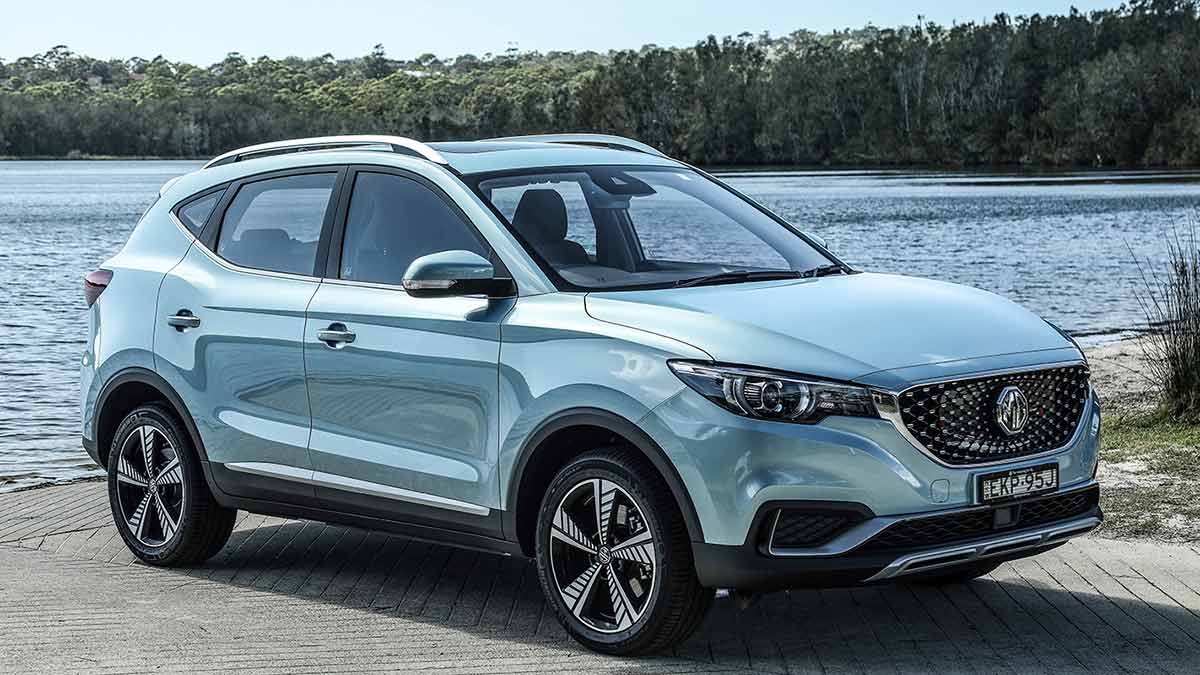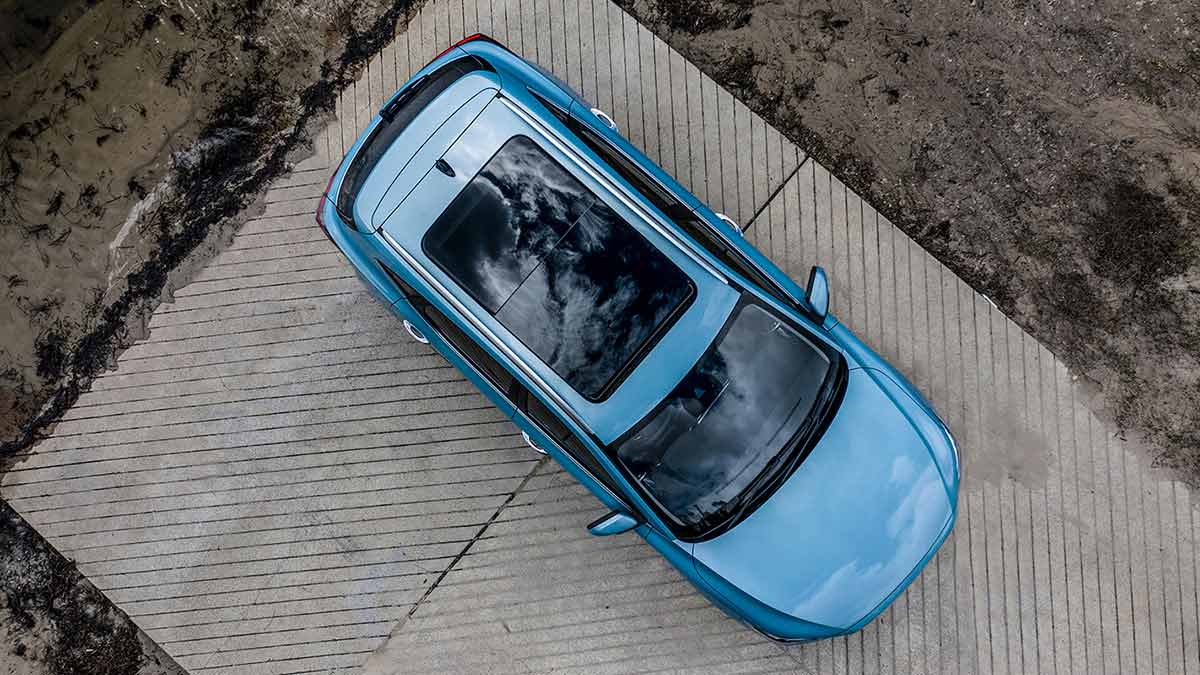The ninth-generation Toyota HiLux has arrived, bringing with it a futuristic forward exterior design, more safety and tech and the same rugged capability owners love. Will the updates tempt private buyers away from the Ford Ranger or are they just enough to keep fleets onside?
MG ZS EV 2020 road test review

Tim Nicholson gets behind the wheel of Australia’s most affordable electric vehicle.
Most people know MG Motor as an iconic British sportscar maker, but in its latest incarnation, it’s owned by Chinese giant SAIC. Australians have been drawn in by the famed badge and budget-friendly pricing, snapping up MGs by the boatload. The MG3 is the top-selling light car in Australia so far this year, and the ZS small SUV is outselling established players like the Suzuki Vitara and Mitsubishi Eclipse Cross. Now MG has its sights set on another segment – electric vehicles – with the arrival of the ZS EV.
Thumbs up
Value-driven EV with impressive list of standard safety features, and an appealing and spacious cabin.
Thumbs down
Busy and unsettled ride, noisy cabin, multimedia system isn’t intuitive, lacking steering-wheel reach adjustment.
In this article
Price and positioning
MG has continued its strategy of aggressive pricing with the ZS EV. The $40,990 before on-road costs (or $43,990 driveaway) pricetag makes it the cheapest EV on sale in Australia. It undercuts the next-most affordable EV, Hyundai’s Ioniq Electric Elite at $48,970 before on-roads. The MG is also quite a bit cheaper than another small electric SUV – the Hyundai Kona Electric from $60,740.
Value is one of MG’s strongest selling points and that remains the case with the ZS EV. Based on the petrol-powered ZS small SUV, the ZS EV features a panoramic sunroof, eight-inch display with Apple CarPlay/Android Auto connectivity, satellite navigation, heated front seats and a six-way electrically adjustable driver’s seat. However, it’s lacking reach adjustment for the steering wheel which is unusual in a car like this, and there’s no DAB digital radio. The only available extra option for the ZS EV is metallic paint for $500.
Safety first
The ZS EV scored five stars from Euro NCAP, but at the time of publishing it’s yet to be tested by ANCAP. The petrol-powered ZS was tested in 2017 and received a four-star rating. MG’s ‘Pilot’ suite of active driver-assist systems is standard.
When activated, the self-steering function of the lane-keeping aid pulls the steering wheel towards the middle of the lane in a jerky manner. It lacks the smoothness of other manufacturers’ systems, notably Hyundai’s. The lane-departure alert noise becomes distracting, but you can turn it off. Also, when you change lanes or get too close to the line marking, the digital speedo disappears and is replaced by a visual alert, but the speedo doesn’t then automatically re-appear. You have to toggle through the steering wheel-mounted control to get it back. These issues show that some of MG’s driver-aid tech needs work.

The inside story
The ZS EV cabin is much the same as the regular ZS, although the electric model replaces a traditional gear shifter with a dial. It includes appealing touches like brushed-aluminium door panels, a chunky flat-bottom sports steering wheel, quality dash and seat materials and circular outer air vents.
Handy storage nooks are useful, but tall bottles won’t fit in the front doors. The central storage sits too high up and impedes front elbow room. The front seats are well bolstered, but firm. Only the driver’s seat has power adjustment.
MG’s eight-inch infotainment system is modern and has a clear display, but it could be more user-friendly. The screen lags when you select a menu icon, and you have to tap the screen quite hard for it to recognise the command. Rather than a digital home key within the screen, the volume dial underneath is the home key. It’s not a particularly intuitive system.
Aside from the lack of steering-wheel reach adjustment, there are other issues with the cabin. The panoramic sunroof has a sheer blind which is great for letting light in, but not great for keeping heat out, particularly on a Victorian summer day. A solid blind would solve this problem.
Finally, the placement of the digital odometer and electric driving-range readouts on either side of the display in the instrument cluster is confusing. There is nothing to indicate which is which, instead you have to guess or remember which one is driving range. It’s not well thought out.
MG has much more work to do in terms of cabin quality if it wants to be considered against established brands like Kia, Hyundai and Toyota.
The second row offers plenty of leg and head room, despite the inclusion of the sunroof, and the firm seats have some bucketing. There are map pockets, a USB port and decent door bottle storage, but no air vents.
The 359-litre boot (1187 litres with rear seats folded) is roomier than the Hyundai Kona Electric’s 332 litres. The cargo space is deep because there’s no spare wheel – only a tyre-repair kit. It lives under the boot floor with the home charge cable.

On the road
Like all electric vehicles, the ZS EV pulls away quickly from a standing start thanks to the almost instant torque. With a 0-100km-h time of 8.2 seconds, it’s not as fast in a straight line as the Kona Electric or Leaf, but you’ll have no trouble getting away at the lights.
Beyond the initial take-off, the MG loses a bit of momentum on steep ascents and it doesn’t accelerate out of corners like some of its rivals can. Sport mode adds some zing, but it also made for some wheel spin on take-off.
The MG is more dynamically capable than we expected, but the suspension tune could do with more attention. It moves around the road and feels shaky on average backroads. Body roll is evident in bends, and the tyres lack grip. It crashes over potholes and even on decent road surfaces the ride feels busy. The steering lacks feel, too. Drivers who stick to well-maintained urban streets, however, will find little to complain about. The ZS EV has three regenerative braking modes but we kept it on the standard mode.
Wind and road noise creep in, making for a boomy cabin. It could do with better sound-absorbing materials.
The MG’s driving range according to WLTP ‘real-world’ standards is 263 kilometres. It had 224 kilometres when we collected it and just before we charged it, there was 51 kilometres left. In that time, we drove about 165 kilometres, give or take, so that checks out. Its energy-efficiency figure was 18kWh, very close to MG’s 18.6kWh claim.
Rather than charging at home, we plugged into a 50kW public charging station in a Brunswick carpark that’s compatible with the Chargefox app. We were at the shops for about 45 minutes in which time it charged from 51 kilometres to 224 kilometres. That charge was free, as many public stations still are.
|
Pricing |
List price: $40,990 before on-road costs. Price as tested: $41,490 before on-road costs. Model range: $23,490 to $40,990 before on-road costs. |
|---|---|
|
Drivetrain |
Single electric motor, 44.5kWh lithium-ion battery, single-gear automatic transmission, front-wheel drive. Power: 105kW. Torque: 353Nm. Wheels: 215/50 R17. |
|
Fuel |
Driving range: 263 kilometres (WLTP). Energy consumption: 18.6kWh/100km (manufacturer’s figure), 18kWh (RACV figure). CO2 emissions: Zero. |
|
Standard safety |
Adaptive cruise control, front-collision warning, autonomous emergency braking, blind-spot detection, rear cross-traffic alert, lane-departure warning, traffic-jam assist. Not yet tested by ANCAP. |
|
Standard features |
Eight-inch touchscreen, Apple CarPlay/Android Auto, six-speaker surround-sound audio, satellite navigation, keyless entry and start, six-way power-adjustable driver’s seat, panoramic sunroof. |
|
Warranty |
Five-year/unlimited-kilometre warranty. Eight-year/160,000-kilometre battery warranty. Service intervals every 12 months/20,000 kilometres. No capped-price servicing plan. |





